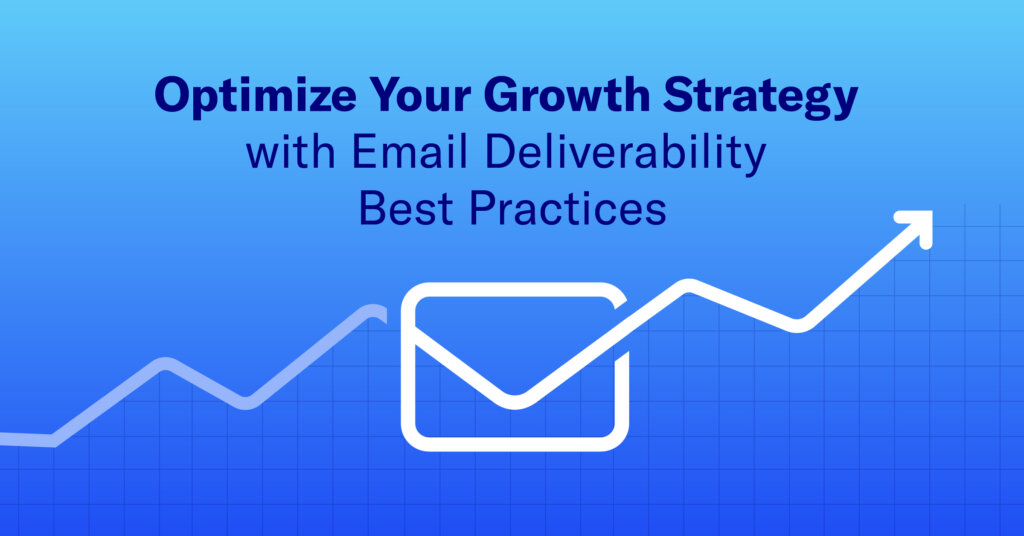Optimize Your Growth Strategy with Email Deliverability Best Practices

Anthony Saia Director, Product

Share to my network
In this article
Categories
Book a meeting
Connect with our team of experts to discuss your conversion and loyalty goals, and how we can help you achieve them faster.
Get a demoEmail deliverability — the measure of how successfully your emails bypass spam filters and land in intended inboxes — can’t be an afterthought for growth teams. Even the most compelling content and perfectly-timed messages are worthless if they land in the spam folder. And, if email is integrated into a broader cross-channel strategy (and it should be!), you’ll end up with a broken link in your customer journey. The result? Customer frustration and missed conversion opportunities.
2024 brought new deliverability standards from Gmail and Yahoo, placing newfound importance on sender reputation, list hygiene and opt-in processes. Keeping pace with these changes can make or break your ability to reach customers on one of the most trusted channels for mobile-first audiences. To ensure every email counts toward conversion and loyalty, we’ve put together tips for mastering the art of inbox delivery.
Sender Reputation is Everything. Build and Protect It.
Think of sender reputation as your email credit score with Internet Service Providers (ISPs) like Gmail and Yahoo. It reflects how trustworthy you are as an email sender, and determines whether your emails should reach your recipients. Sender reputation is calculated by each mailbox provider on a frequent and recurring basis, based on several heuristics outlined below.
Key Heuristics Impacting Sender Reputation
Even subtle signs of spam-like activity or low-quality content can trigger filters and blocks. Monitor your score closely and address issues immediately to avoid negative ramifications.
In the following sections, we’ll dig deeper into a few recommendations that will help you protect it.
Cultivate a Healthy Subscriber List
List acquisition and hygiene have always been a key pillar of deliverability, but have grown in importance with greater focus on transparent opt-out processes and stricter spam thresholds. Failure to give your subscriber list the right attention often results in negative actions taken by ISPs, such as blocking or spam filtering.
Here are a few ways to optimize your list hygiene:
- Opt-Ins: Only send marketing emails to those who have explicitly opted in. No automatic check boxes. Double opt-in with an additional step is also encouraged.
- Scrubbing: Verify email addresses at the time of opt-in to ensure they’re real. Then, continue to scrub your list of hard bounces, spam traps and unsubscribes regularly.
- Seamless Opt-Outs: Gmail and Yahoo now require you to allow recipients to unsubscribe with a single click directly within a campaign. You must follow through within two days.
The Bottom Line: Implement automated list cleaning processes and segment your audience based on engagement levels. Focus on re-engaging inactive subscribers before resorting to removal.
Create the Optimal Outreach Cadence
When you’re first getting started, IP warming – the process of gradually increasing the number of emails sent from a new IP address to avoid being flagged as spam – is critical. But, after warming, maintaining a regular email schedule without overstepping is equally as important.
We recommend emailing your audience at least every two weeks. After all, mailbox providers value consistency and predictability. Regular outreach helps them identify network and storage needs. If you only send monthly, split your audience into four segments and send to each segment 24 hours apart.
- Avoid Large Bursts: Break large campaigns into smaller splits.
- Use an Engagement Filter: Segment emails to recipients who have opened or clicked an email in the past 60-90 days.
Example of Engagement Filter within Airship
- Live By the Golden Rule: Never send more than 2X traffic than the previous 7-day average in a single 24-hour period.
The Bottom Line: Keep a close eye on your average sending volume. Segment campaigns to prioritize your most engaged audience first, gradually expanding to a broader base. Review your open, click and bounce rates and consider adjusting your content or targeting if you note a decline.
Build Credibility Through Authentication
Email authentication isn’t just for security teams; it’s fundamental to your deliverability. Protocols like Sender Policy Framework (SPF), Domain Keys Identified Mail (DKIM) and Domain-based Message Authentication, Reporting and Conformance (DMARC) verify your identity as a sender, proving your legitimacy. They help ISPs distinguish your emails from spoofed or fraudulent messages, and protect your brand from phishing and impersonation. Gmail and Yahoo now require DMARC records to be in place for bulk senders.
Here is a quick reminder of each and how they authenticate:
- SPF: Allows a domain owner to specify which mail servers are authorized to send email on behalf of their domain by publishing a list of authorized sending IP addresses in a DNS record.
- DKIM: Uses cryptographic signatures to verify that an email message was sent by an authorized owner of the sending domain, and that the message content hasn’t been altered in transit.
- DMARC: Enables a domain owner to publish a policy in their DNS records specifying how receiving mail servers should handle emails that fail SPF or DKIM checks (e.g., reject, quarantine, etc.)
Embrace New Authentication Protocols
Brand Indicators for Message Identification (BIMI) is coming more into focus this year, allowing brands to display their logo next to their message in Apple Mail, Yahoo and Gmail. In addition to increasing trust with recipients, BIMI offers greater visual differentiation in the inbox. See how BIMI works and the benefits it delivers in the inbox in our deep dive article.
Before and After View of the Inbox with BIMI
The Bottom Line: Work with your IT or technical team to ensure SPF, DKIM, and DMARC are properly configured for all your sending domains. Explore BIMI to reinforce inbox credibility.
Maintain an Agile Approach Rooted in Growth Experimentation
Your email strategy should be as dynamic as your customers. Experiment with different subject lines and content to understand what truly resonates with your audience. The more your content hits, the better your deliverability will be.
And, if you have questions about email deliverability or are curious to learn more about Airship Email, feel free to set time up with our team to discuss your unique goals.